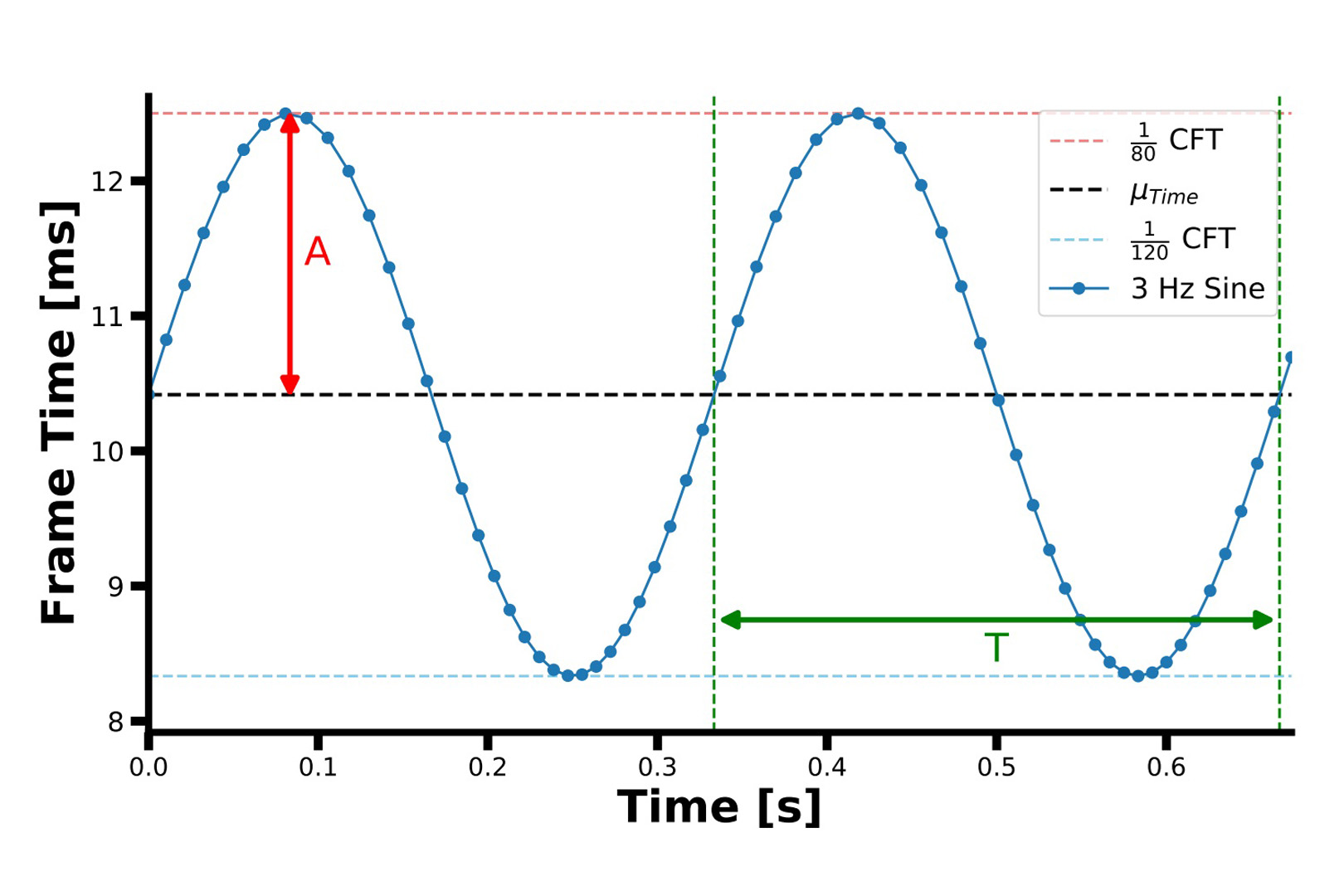“On Smoothly Varying Frame Timing in First-person Gaming” by Klein, Spjut, Boudaoud and Kim
Conference:
Title:
- On Smoothly Varying Frame Timing in First-person Gaming
Session/Category Title: The Sporting Life
Presenter(s)/Author(s):
Abstract:
We present a user study using smoothly varying frame timing and variable refresh rate to measure user performance in FPS games. Through two experiments, we find that varying frame time affects the perception of smoothness, though we measure no additional impact on FPS aiming performance.
References:
[1]
Ben Boudaoud, Josef Spjut, and Joohwan Kim. 2022. FirstPersonScience: An Open Source Tool for Studying FPS Esports Aiming. In Special Interest Group on Computer Graphics and Interactive Techniques Conference Talks. Association for Computing Machinery, New York, NY, USA, 1?2.
[2]
Kajal T Claypool and Mark Claypool. 2007. On frame rate and player performance in first person shooter games. Multimedia systems 13, 1 (2007), 3?17.
[3]
Gyorgy Denes, Akshay Jindal, Aliaksei Mikhailiuk, and Rafa? K. Mantiuk. 2020. A Perceptual Model of Motion Quality for Rendering with Adaptive Refresh-Rate and Resolution. ACM Trans. Graph. 39, 4, Article 133 (jul 2020), 17 pages. https://doi.org/10.1145/3386569.3392411
[4]
Akshay Jindal, Krzysztof Wolski, Karol Myszkowski, and Rafa? K Mantiuk. 2021. Perceptual model for adaptive local shading and refresh rate. ACM Transactions on Graphics (TOG) 40, 6 (2021), 1?18.
[5]
Devi Klein, Josef Spjut, Ben Boudaoud, and Joohwan Kim. 2023. The Influence of Variable Frame Timing on First-Person Gaming. arxiv:2306.01691 [cs.GR]
[6]
Devi Klein, Josef Spjut, Ben Boudaoud, and Joohwan Kim. 2024. Variable Frame Timing Affects Perception of Smoothness in First-Person Gaming. IEEE Conference on Games (2024).
[7]
Seung Hoon Ko. 2019. A-24 db in-band noise-immunity mutual capacitance readout system for variable refresh rate of active-matrix oled display. IEEE Transactions on Circuits and Systems I: Regular Papers 67, 4 (2019), 1126?1135.
[8]
Shengmei Liu, Atsuo Kuwahara, James J Scovell, and Mark Claypool. 2023. The Effects of Frame Rate Variation on Game Player Quality of Experience. In Proceedings of the 2023 CHI Conference on Human Factors in Computing Systems. Association for Computing Machinery, New York, NY, USA, 1?10.
[9]
Christian H Poth, Rebecca M Foerster, Christian Behler, Ulrich Schwanecke, Werner X Schneider, and Mario Botsch. 2018. Ultrahigh temporal resolution of visual presentation using gaming monitors and G-Sync. Behavior research methods 50, 1 (2018), 26?38.
[10]
Maryam Riahi and Benjamin Allen Watson. 2021. Am I Playing Better Now? The Effects of G-SYNC in 60Hz Gameplay. Proc. ACM Comput. Graph. Interact. Tech. 4, 1, Article 6 (apr 2021), 17 pages. https://doi.org/10.1145/3451269
[11]
Kyong Jin Shim, Kuo-Wei Hsu, Samarth Damania, Colin DeLong, and Jaideep Srivastava. 2011. An Exploratory Study of Player and Team Performance in Multiplayer First-Person-Shooter Games. In 2011 IEEE Third International Conference on Privacy, Security, Risk and Trust and 2011 IEEE Third International Conference on Social Computing. IEEE, New York, NY, USA, 617?620. https://doi.org/10.1109/PASSAT/SocialCom.2011.155
[12]
Josef Spjut, Ben Boudaoud, Kamran Binaee, Jonghyun Kim, Alexander Majercik, Morgan McGuire, David Luebke, and Joohwan Kim. 2019a. Latency of 30 Ms Benefits First Person Targeting Tasks More Than Refresh Rate Above 60 Hz. In SIGGRAPH Asia 2019 Technical Briefs (Brisbane, QLD, Australia) (SA ?19). Association for Computing Machinery, New York, NY, USA, 110?113. https://doi.org/10.1145/3355088.3365170
[13]
Josef Spjut, Ben Boudaoud, Kamran Binaee, Alexander Majercik, Morgan McGuire, and Joohwan Kim. 2019b. FirstPersonScience: Quantifying Psychophysics for First Person Shooter Tasks. In UCI Esports Conference. UCI, Irvine, 7 pages.
[14]
Benjamin Watson, Rachit Shrivastava, and Ajinkya Gavane. 2019. The Effects of Adaptive Synchronization on Performance and Experience in Gameplay. Proc. ACM Comput. Graph. Interact. Tech. 2, 1, Article 5 (jun 2019), 13 pages. https://doi.org/10.1145/3320286
[15]
Bonghyun You, Hui Nam, and Hyojin Lee. 2020. Image Adaptive Refresh Rate technology for Ultra Low Power Consumption. SID Symposium Digest of Technical Papers 51, 1 (2020), 676?679. https://doi.org/10.1002/sdtp.13958





